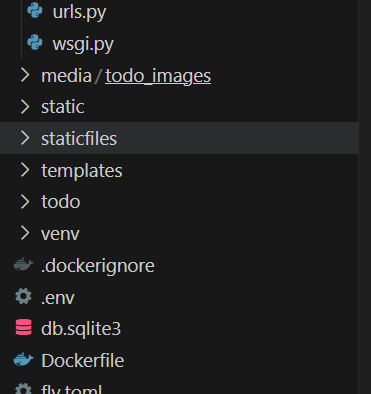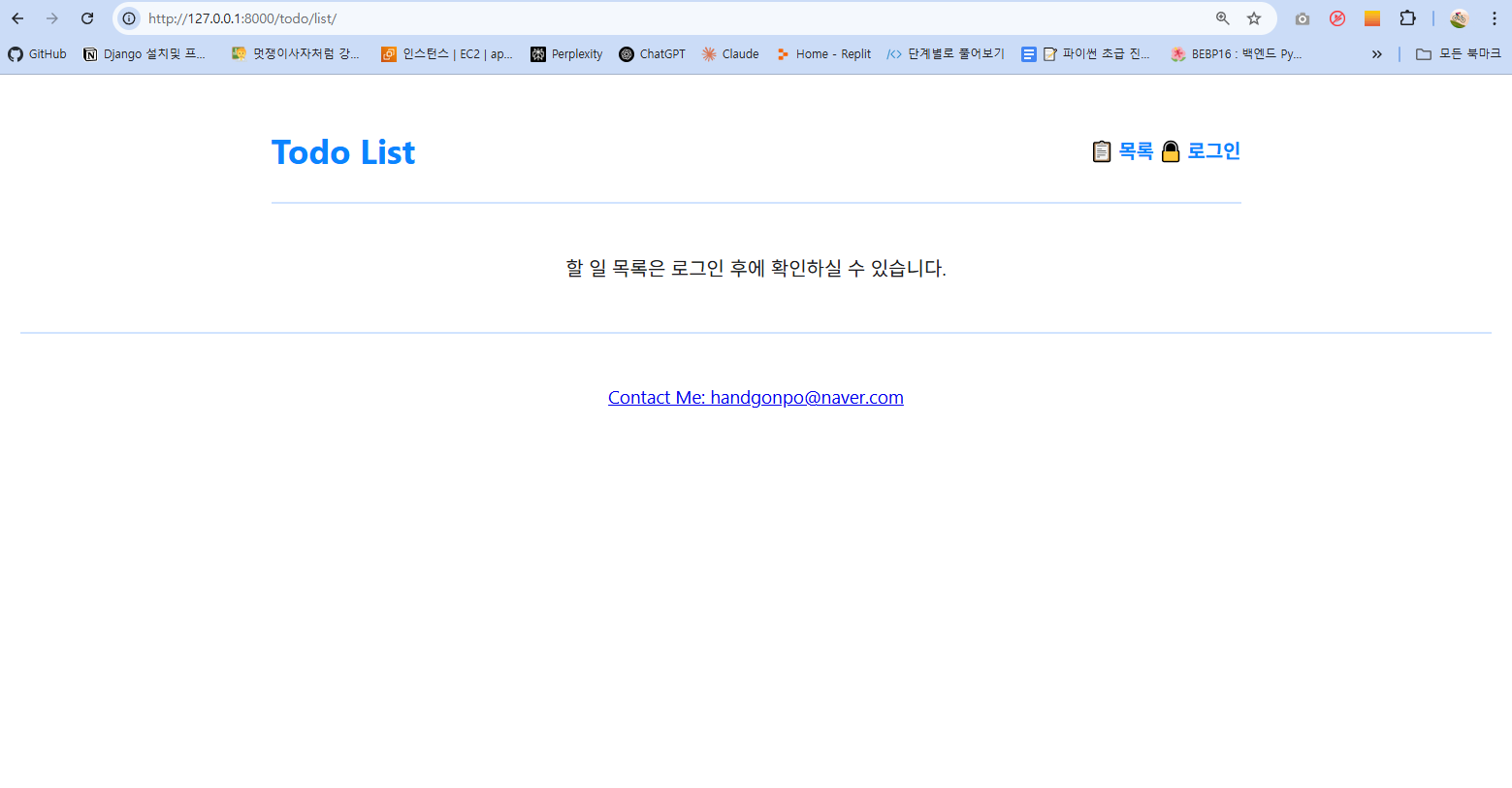로딩 중이에요... 🐣
Django(todoList) 6 이미지필드추가 | ✅ 저자: 이유정(박사)
[feat] django (Day 7)
- pagination
- CSS styling for pagination
config > settings.py
REST_FRAMEWORK = {
# 기본권한 설정: 누구나 API에 접근 가능(개발시 사용)
"DEFAULT_PERMISSION_CLASSES": [
"rest_framework.permissions.AllowAny",
],
# 기본 페이지네이션 설정
"DEFAULT_PAGINATION_CLASS": "todo.pagination.CustomPageNumberPagination",
"PAGE_SIZE": 10,
# API응답형식
"DEFAULT_RENDERER_CLASSES": [
"rest_framework.renderers.JSONRenderer",
"rest_framework.renderers.BrowsableAPIRenderer",
],
}
TIME_ZONE = 'Asia/Seoul' # 한국시간으로 변경
"JSONRenderer" → JSON 응답
"BrowsableAPIRenderer" → 웹브라우저에서 DRF 테스트 화면 보기 가능
todo > pagination.py
from rest_framework.pagination import PageNumberPagination
from rest_framework.response import Response
from collections import OrderedDict
from django.conf import settings
class CustomPageNumberPagination(PageNumberPagination):
default_page_size = settings.REST_FRAMEWORK.get("PAGE_SIZE", 10)
def paginate_queryset(self, queryset, request, view=None):
page_size = request.query_params.get("page_size", self.default_page_size)
if page_size == "all":
self.page_size = len(queryset)
else:
try:
self.page_size = int(page_size)
except ValueError:
self.page_size = self.default_page_size
return super().paginate_queryset(queryset, request, view)
def get_paginated_response(self, data):
return Response(
OrderedDict([
("data", data),
("page_size", len(data)),
("total_count", self.page.paginator.count),
("page_count", self.page.paginator.num_pages),
("current_page", self.page.number),
("next", self.get_next_link()),
("previous", self.get_previous_link()),
])
)
의사코드
클래스 CustomPageNumberPagination:
PageNumberPagination을 상속받는다
설정: 기본 페이지 크기(default_page_size)는 settings에서 불러온다
(없으면 기본값 10)
메서드: paginate_queryset(queryset, request, view)
- 클라이언트가 요청한 페이지 크기(page_size)를 쿼리에서 가져온다
- 만약 page_size가 "all"이면:
- 전체 queryset 길이만큼 데이터를 한 번에 보여주도록 설정
- 그렇지 않으면:
- page_size를 정수로 변환해서 사용
- 변환 실패 시 default_page_size 사용
- DRF 기본 paginate_queryset() 기능을 실행한다
메서드: get_paginated_response(data)
- 데이터를 다음과 같은 구조로 감싸서 응답한다:
{
"data": 실제 데이터 목록,
"page_size": 이번 응답에서 몇 개 보냈는지,
"total_count": 전체 데이터 개수,
"page_count": 전체 페이지 수,
"current_page": 현재 페이지 번호,
"next": 다음 페이지 링크,
"previous": 이전 페이지 링크
}
Django REST Framework & URL 이름 설정(꼭 설명)
| 구분 | 키워드 | 역할 | 예시 |
|---|---|---|---|
config/urls.py |
namespace= |
앱 전체의 URL 이름 공간을 구분 | include("todo.urls", namespace="todo") |
app/urls.py |
name= |
단일 URL에 이름을 부여 | path("create/", views.create, name="todo-create") |
| DRF Router | basename= |
ViewSet에서 생성되는 URL name의 prefix | router.register("todos", TodoViewSet, basename="todo") |
페이지네이션 마무리 list.html 수정 데이터를 많이 채우기 settings.py에서 pagination 숫자를 조절하기
이미지삽입
pip install Pillow
config/settings.py
MEDIA_URL = '/media/'
MEDIA_ROOT = os.path.join(BASE_DIR, 'media')
todo/models.py (이미지 필드 추가)
# 이미지 필드 추가
image = models.ImageField(upload_to='todo_images/', blank=True, null=True)
todo > models.py 추가
from django.utils import timezone
# 기본 동작 보완: complete 값에 따라 completed_at을 자동으로 처리
def save(self, *args, **kwargs):
if self.complete and self.completed_at is None:
self.completed_at = timezone.now()
if not self.complete and self.completed_at is not None:
self.completed_at = None
super().save(*args, **kwargs)
timezone.now() 함수는 장고 설정(settings.py)에서 지정한 시간대(timezone)로 기준으로 반환해 줍니다.
터미널에 추가
python manage.py makemigrations
python manage.py migrate
todo/api_views.py (생성하기에 추가)
from rest_framework.parsers import MultiPartParser, FormParser
# 멀티 파트 파서(파싱), 폼 파서(파싱)
# 생성하기
class TodoCreateAPI(APIView):
parser_classes = [MultiPartParser, FormParser]
MultiPartParser 이미지나 파일을 포함한 폼 데이터를 이해함 (사용자가 이미지 첨부 시)
FormParser 텍스트만 포함된 폼 데이터를 이해함 (일반 로그인 폼, 댓글 등)
todo/serializers.py
fields = "__all__" # 필드가 all로 되어있지 않으면 필드에 image추가
static/js/axiosInstance.js
const axiosInstance = axios.create({
baseURL: '/',
headers: {
"X-CSRFToken": getCookie("csrftoken"),
// 'Content-Type': 'application/json', 이거 삭제
"Content-Type": "multipart/form-data" // 이거 추가
}
});
templates/todo/create.html (함수 전체 수정)
// --- 4. 생성 버튼 클릭 시 실행되는 핸들러 --
function gatherFormData() {
const formData = new FormData(); // 이미지 전송 가능한 폼 객체
// 숫자 처리
let expVal = document.getElementById('exp').value;
if (expVal === '') expVal = 0;
// 날짜 처리
const completedAtInput = document.getElementById('completed_at').value;
const completedAt = completedAtInput ? new Date(completedAtInput).toISOString() : null;
// 텍스트 필드 추가
formData.append("name", document.getElementById('name').value);
formData.append("description", document.getElementById('description').value);
formData.append("complete", document.getElementById('complete').checked);
formData.append("completed_at", completedAt);
formData.append("exp", Number(expVal));
// 이미지 파일 추가
const imageInput = document.getElementById('image');
if (imageInput && imageInput.files.length > 0) {
formData.append("image", imageInput.files[0]);
}
return formData;
}
이미지(파일)를 함께 서버로 보내기 위해서 수정해야 합니다. 원래 사용하던 방식은 이렇게 생긴 일반 JS 객체입니다
return {
name: "...",
description: "...",
image: document.getElementById('image').files[0]
};
하지만 문제는:
- axios가 이 객체를 JSON.stringify()로 바꿔서 보냅니다 (스트링어파이)
.stringify()는 자바스크립트에서 객체(Object)를 문자열(String)로 바꿔주는 함수입니다.- → JSON은 텍스트만 담을 수 있어서 이미지 파일은 깨집니다
- → 서버는
request.FILES에서 아무 것도 못 받음 → 400 오류 발생
list.html (수정 이미지 추가)
<p><strong>Experience Points:</strong> ${todo.exp}</p>
<p><strong>image:</strong><br> ${todo.image ? `<img src="${todo.image}" alt="${todo.name}" width="150">` : ''}</p>
<button class="completeBtn">완료</button>
 위의 이미지와 같이 폴더생성
위의 이미지와 같이 폴더생성
<div>
<label for="image">Image:</label>
<input type="file" name="image" id="image">
</div>
이미지 필드 추가
config/urls.py
from django.conf import settings
from django.conf.urls.static import static
...
]+ static(settings.MEDIA_URL, document_root=settings.MEDIA_ROOT)
개발환경에서 업로드된 미디어 파일(media files) 을 브라우저에서 접근 가능하게 하기 위해 설정해주는 코드입니다. 개발 서버에서는 Django가 미디어 파일을 자동으로 서빙하지 않기 때문입니다.
즉, 사용자가 업로드한 이미지가 /media/myphoto.jpg에 저장되어 있다고 해도, 아무 설정이 없으면 브라우저에서 그 URL을 열었을 때 404 오류가 납니다.
인증 권한 설정
 위처럼 수정하려면 list를 조건문으로 수정하기
위처럼 수정하려면 list를 조건문으로 수정하기
{% if user.is_authenticated %}
<div class="todocontainer"></div>
<div class="pagination" ></div>
<div class="list-btn"><button class="todoCreate" id="createBtn">Todo 등록하기</button></div>
{% else %}
<div style="max-width: 600px; margin: 40px auto; text-align: center;">
<p>할 일 목록은 로그인 후에 확인하실 수 있습니다.</p>
</div>
{% endif %}
todo/api_views.py
# 인증 방식 설정: Django 로그인 세션 사용
authentication_classes = [SessionAuthentication]
# 권한 설정: 로그인된 사용자만 이 API 사용 가능
permission_classes = [IsAuthenticated]
config/setting.py
REST_FRAMEWORK = {
# 인증 클래스: 사용자의 로그인 여부를 판단하는 방법 지정
# SessionAuthentication → Django의 로그인 세션 기반
# JWTAuthentication → 토큰 기반 인증 (선택사항, 사용 시 추가 설치 필요)
"DEFAULT_AUTHENTICATION_CLASSES": [
"rest_framework.authentication.SessionAuthentication",
# "rest_framework_simplejwt.authentication.JWTAuthentication",
# JWT 사용 시 주석 해제
],
# 권한 클래스: 인증된 사용자만 접근 가능하도록 기본 설정
"DEFAULT_PERMISSION_CLASSES": [
"rest_framework.permissions.IsAuthenticated",
# 로그인된 사용자만 접근 허용
# "rest_framework.permissions.AllowAny",
# 전체 공개로 바꾸고 싶을 때 사용
],
보안설정
# django-environ 설치하기
pip install django-environ
settings.py
import os, environ # 환경변수 추가
# 가장 윗줄에 있어야 에러가 안남
BASE_DIR = Path(__file__).resolve().parent.parent
# 보안 향상, 코드 재사용, 환경 구분 가능
env = environ.Env(
DEBUG=(bool, False)
)
#
environ.Env.read_env(os.path.join(BASE_DIR, '.env'))
# SECURITY를 .env로 이동하여 보호
SECRET_KEY = env('DJANGO_SECRET_KEY')
.env 파일을 manage.py경로에 생성
DJANGO_SECRET_KEY="your-very-secret-key-here"
app 분리관리
CUSTOM_APPS = [
'todo',
]
THIRD_PARTY_APPS = [
'django.contrib.admin',
'django.contrib.auth',
'django.contrib.contenttypes',
'django.contrib.sessions',
'django.contrib.messages',
'django.contrib.staticfiles',
'rest_framework',
]
INSTALLED_APPS = CUSTOM_APPS + THIRD_PARTY_APPS
스웨거 추가
pip install mysqlclient==2.2.1 Pillow==10.3.0 markdown==3.5.1 django-filter==23.5 drf-spectacular==0.27.0
pip install drf-spectacular
config/settings.py
# OpenAPI 스키마 클래스: drf-spectacular을 통한 Swagger 문서 자동 생성
"DEFAULT_SCHEMA_CLASS": "drf_spectacular.openapi.AutoSchema",
config/urls.py
from drf_spectacular.views import SpectacularAPIView, SpectacularRedocView, SpectacularSwaggerView
from django.views.generic import TemplateView
# OpenAPI 3.0 schema
path("api/schema/", SpectacularAPIView.as_view(), name="schema"),
path("api/schema/swagger-ui/", SpectacularSwaggerView.as_view(url_name="schema"), name="swagger-ui"),
path("api/schema/redoc/", SpectacularRedocView.as_view(url_name="schema"), name="redoc"),
http://127.0.0.1:8800/api/schema/swagger-ui/
버튼 수정: css를 위해
<div class="list-btn"><button class="todoCreate" id="createBtn">Todo 등록하기</button></div>
static > css > styles.css
/* 기존 내용 유지 */
.todo-item.completed {
text-decoration: line-through;
}
/* reset */
* {
margin: 0;
padding: 0;
box-sizing: border-box;
}
/* body 스타일 */
body {
background-color: #ffffff;
color: #1c1c1e;
font-family: 'Segoe UI', Tahoma, Geneva, Verdana, sans-serif;
line-height: 1.6;
padding: 20px;
}
/* 공통 박스 */
.container, .todocontainer {
max-width: 800px;
margin: 40px auto;
padding: 30px;
background-color: #ffffff;
border-radius: 12px;
box-shadow: 0 0 15px rgba(0, 122, 255, 0.1);
}
/* 헤더 스타일 강화 */
.header {
max-width: 800px;
margin: 0 auto 20px auto;
padding: 20px 0;
border-bottom: 2px solid #d0e3ff;
display: flex;
justify-content: space-between;
align-items: center;
}
.header h1 {
font-size: 28px;
color: #0a84ff;
margin: 0;
}
.header a,
.header button {
font-weight: bold;
color: #0a84ff;
text-decoration: none;
background: none;
border: none;
cursor: pointer;
font-size: 16px;
}
/* input 스타일 */
input[type="text"],
input[type="number"],
textarea {
width: 100%;
padding: 12px;
border-radius: 8px;
border: 1px solid #ccc;
background-color: #fff;
color: #1c1c1e;
margin-bottom: 20px;
font-size: 16px;
}
/* checkbox */
input[type="checkbox"] {
transform: scale(1.3);
margin-top: 10px;
}
/* 공통 버튼 */
button {
background-color: #0a84ff;
color: white;
border: none;
border-radius: 8px;
padding: 12px 24px;
font-weight: bold;
font-size: 16px;
cursor: pointer;
transition: background-color 0.2s ease-in-out;
margin-top: 10px;
}
button:hover {
background-color: #0066cc;
}
/* todo 아이템 */
.todo-item {
background-color: #e6f0ff;
border-radius: 10px;
padding: 15px 20px;
margin: 10px auto 15px auto;
cursor: pointer;
transition: background-color 0.2s ease-in-out;
max-width: 800px;
border: 1px solid #bcdcff;
}
.todo-item:hover {
background-color: #d0e8ff;
}
/* 등록 버튼 왼쪽 정렬 */
.list-btn{
max-width: 800px;
margin: 40px auto;
}
.todoCreate {
margin: 20px auto 20px 0;
background-color: #007aff;
color: white;
}
.todoCreate:hover {
background-color: #005bb5;
}
/* 페이지네이션 */
.pagination {
display: flex;
justify-content: center;
margin: 20px 0;
}
.pagination button {
background-color: #0a84ff;
color: white;
border: none;
margin: 0 5px;
padding: 8px 16px;
border-radius: 6px;
font-weight: bold;
cursor: pointer;
}
.pagination button.active {
background-color: #005bb5;
}
.pagination button:disabled {
background-color: #ccc;
cursor: not-allowed;
}
/* 푸터 스타일 강조 */
.footer {
text-align: center;
padding-top: 40px;
margin-top: 40px;
border-top: 2px solid #d0e3ff;
color: #555;
font-size: 15px;
}
나중에
SQLite → PostgreSQL 전환 절차
settings.py에서 데이터베이스 설정 변경
# BEFORE (SQLite)
DATABASES = {
'default': {
'ENGINE': 'django.db.backends.sqlite3',
'NAME': BASE_DIR / 'db.sqlite3',
}
}
# AFTER (PostgreSQL)
DATABASES = {
'default': {
'ENGINE': 'django.db.backends.postgresql',
'NAME': 'todo_db', # 사용할 DB 이름
'USER': 'postgres', # DB 사용자
'PASSWORD': 'yourpassword',
'HOST': 'localhost', # 또는 RDS 주소, Docker 컨테이너 이름 등
'PORT': '5432', # PostgreSQL 기본 포트
}
}
PostgreSQL 설치 및 DB 생성
# PostgreSQL 설치 후
createdb todo_db # 이름은 settings.py의 NAME과 일치시켜야 함
마이그레이션 재실행
python manage.py migrate
(선택) 기존 SQLite 데이터 이관
python manage.py dumpdata > data.json
PostgreSQL 설정 후:
python manage.py loaddata data.json
